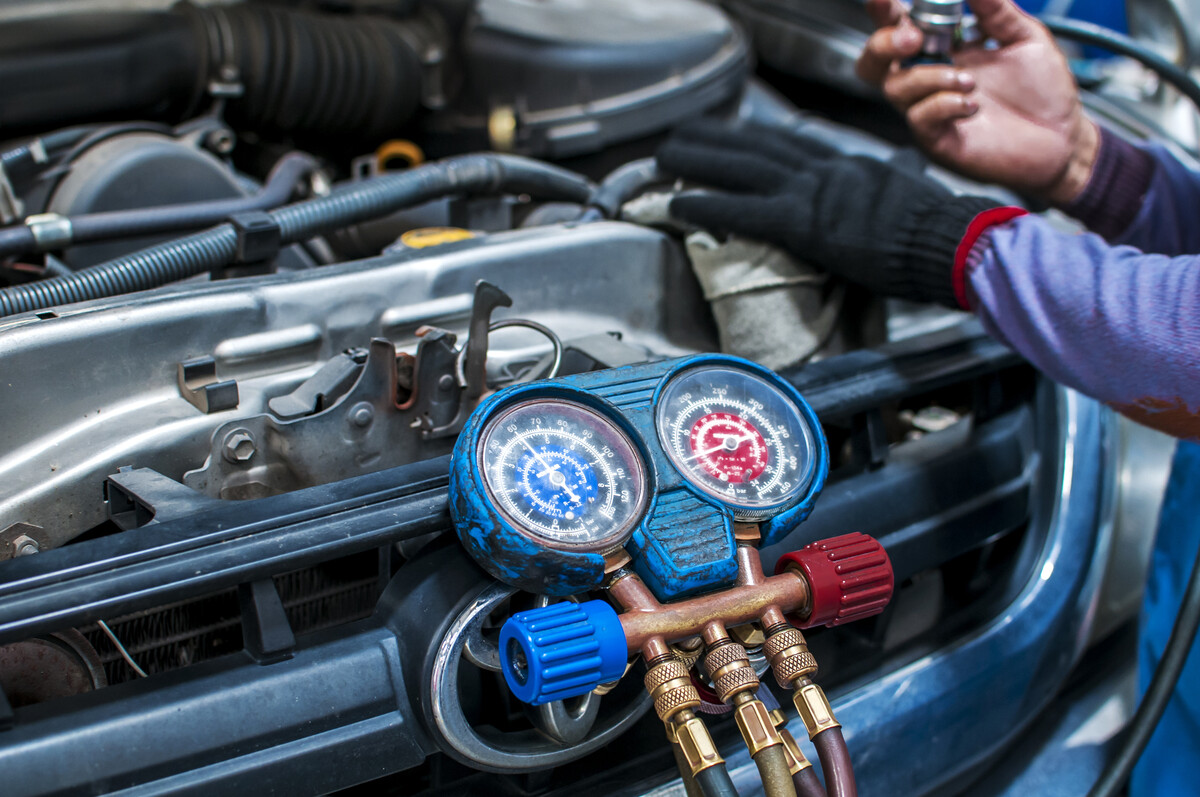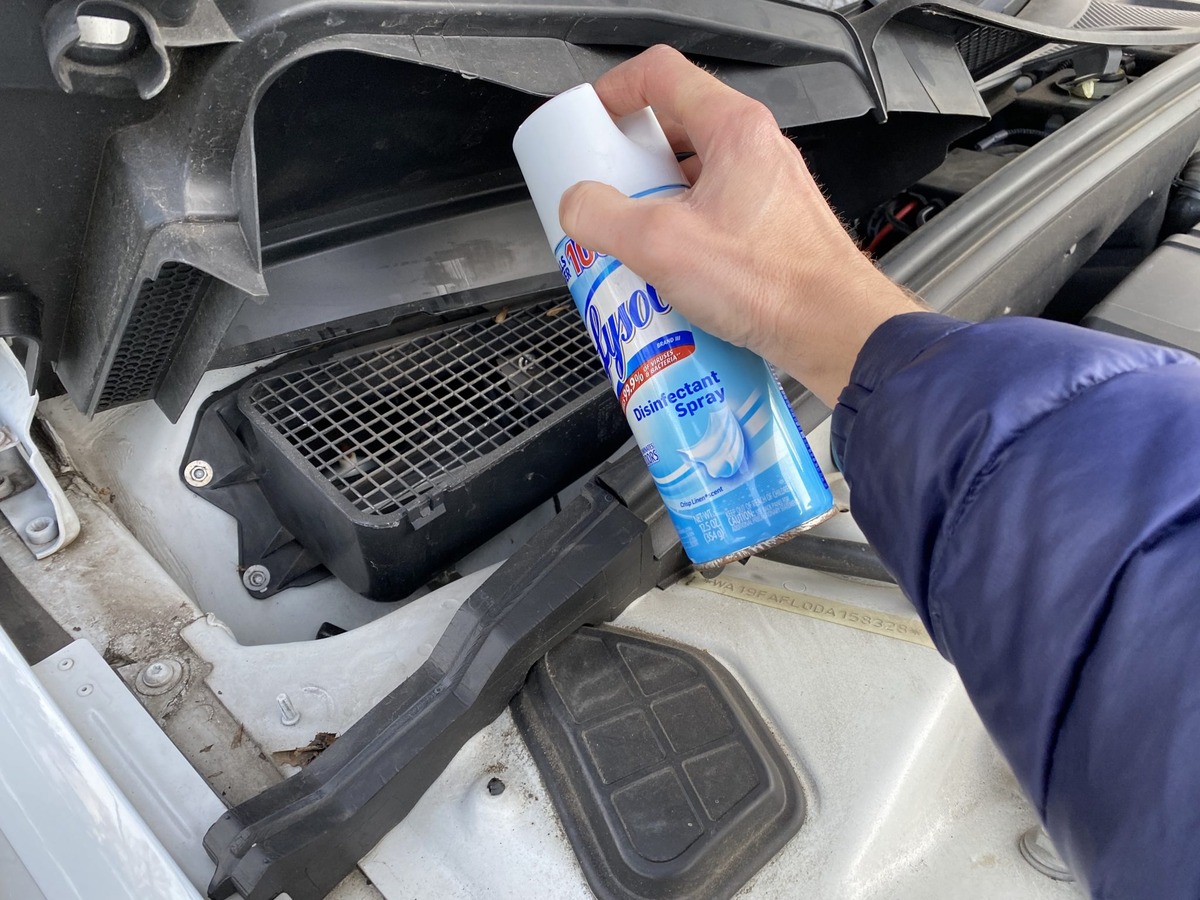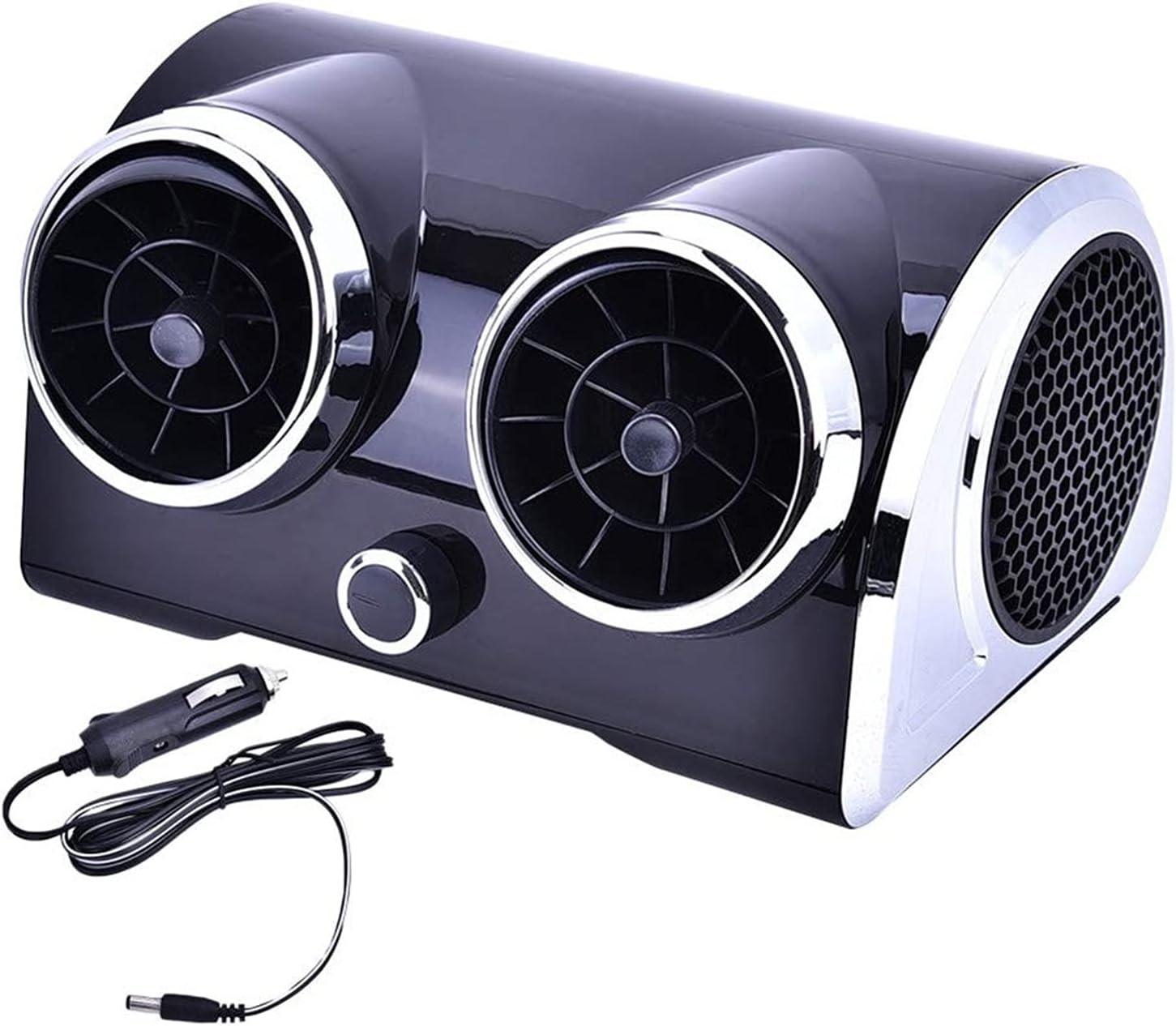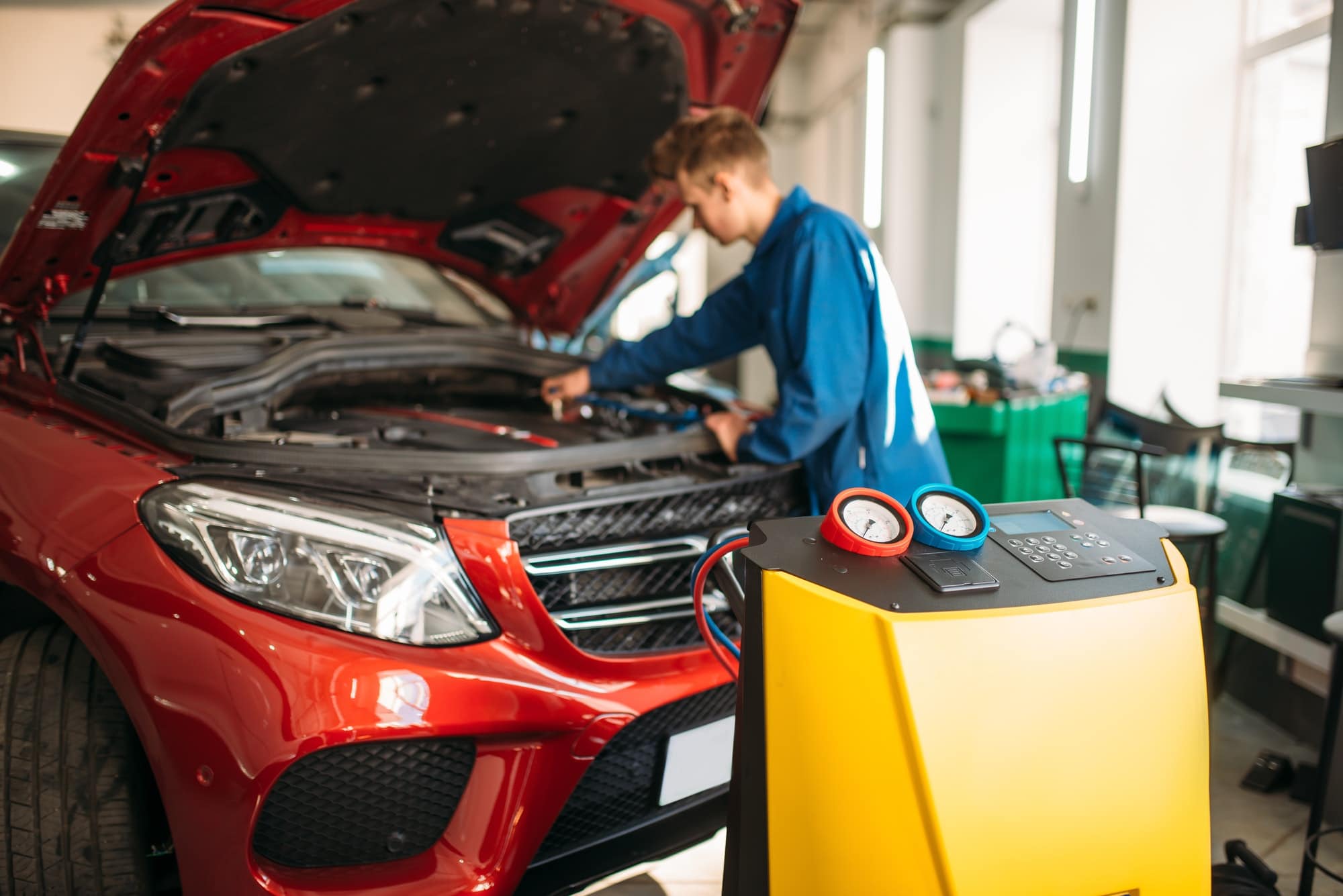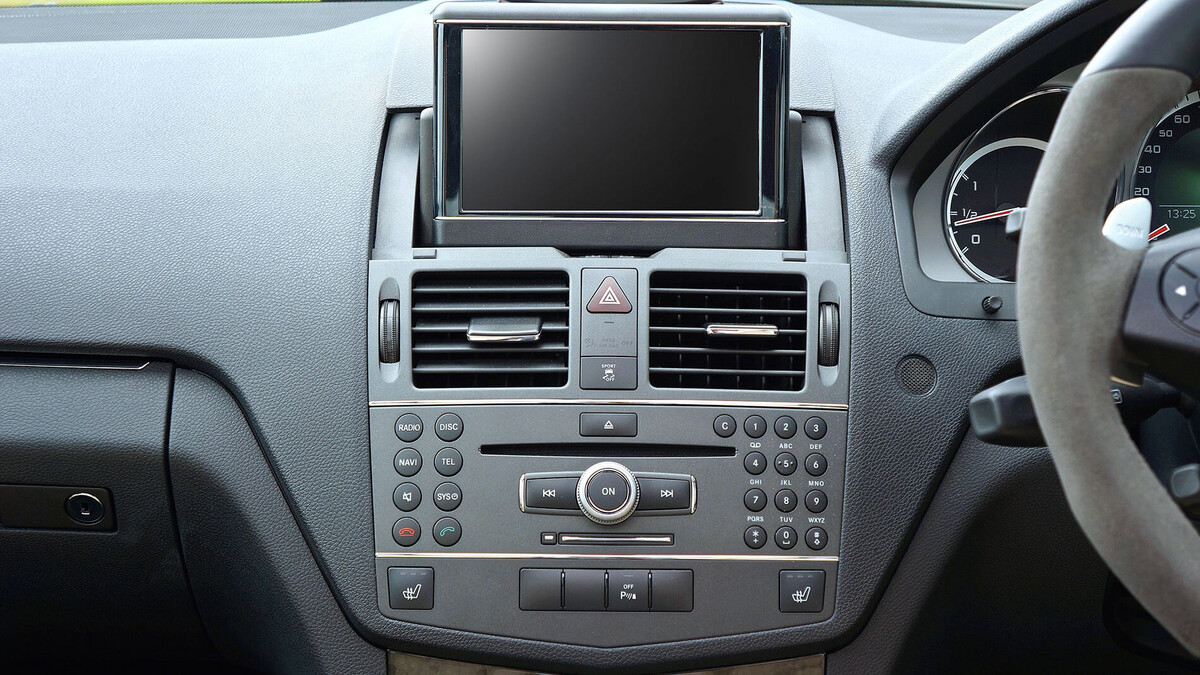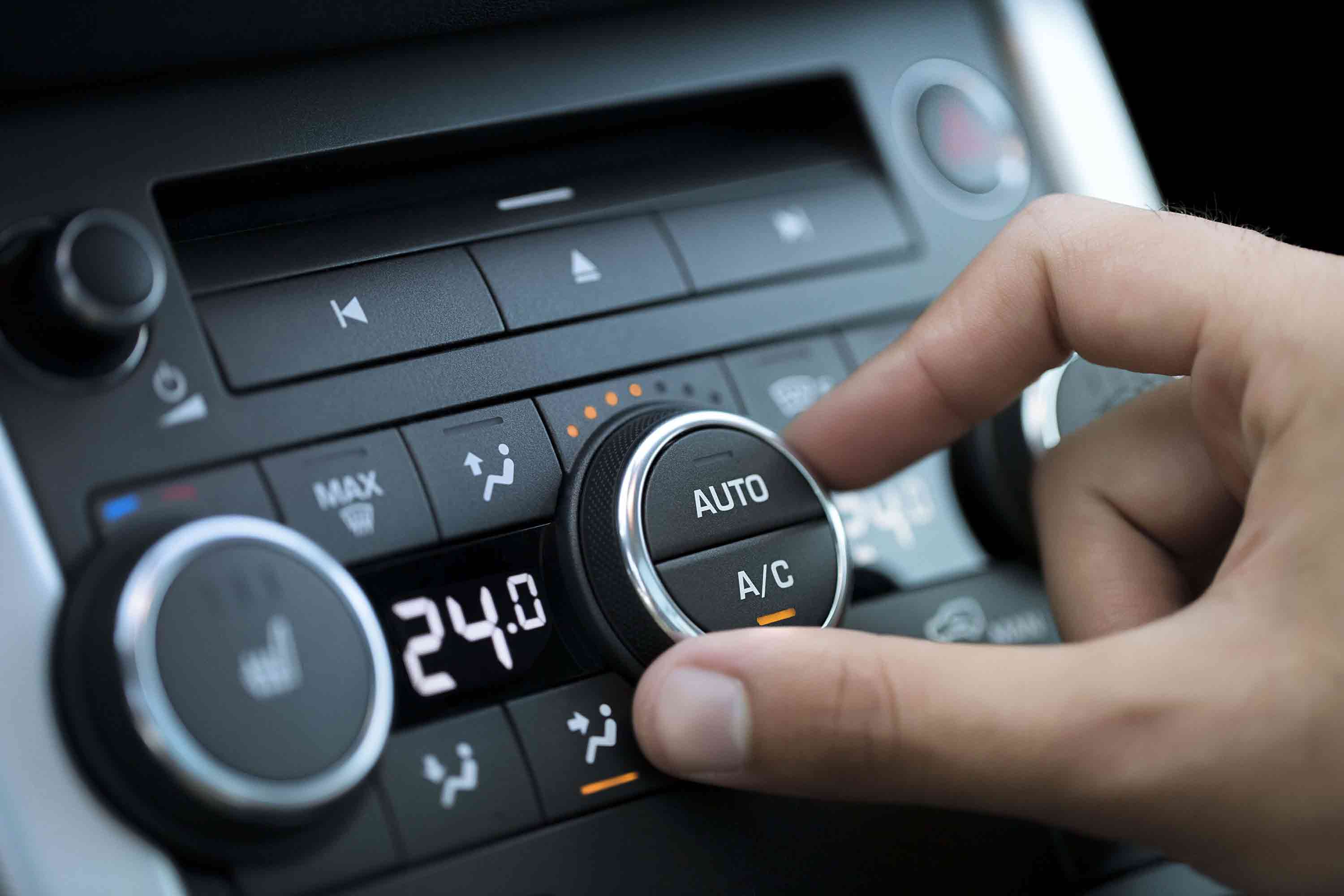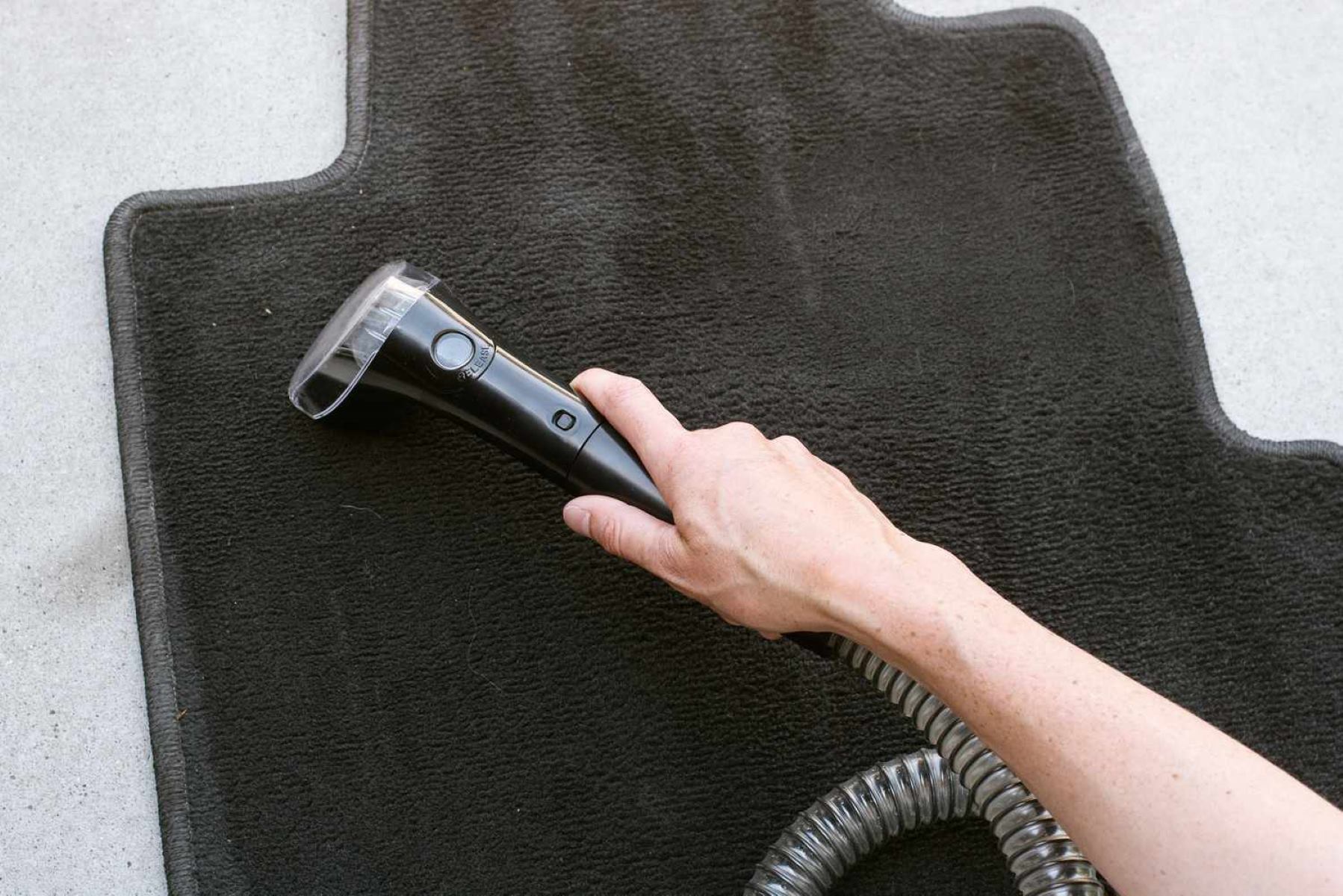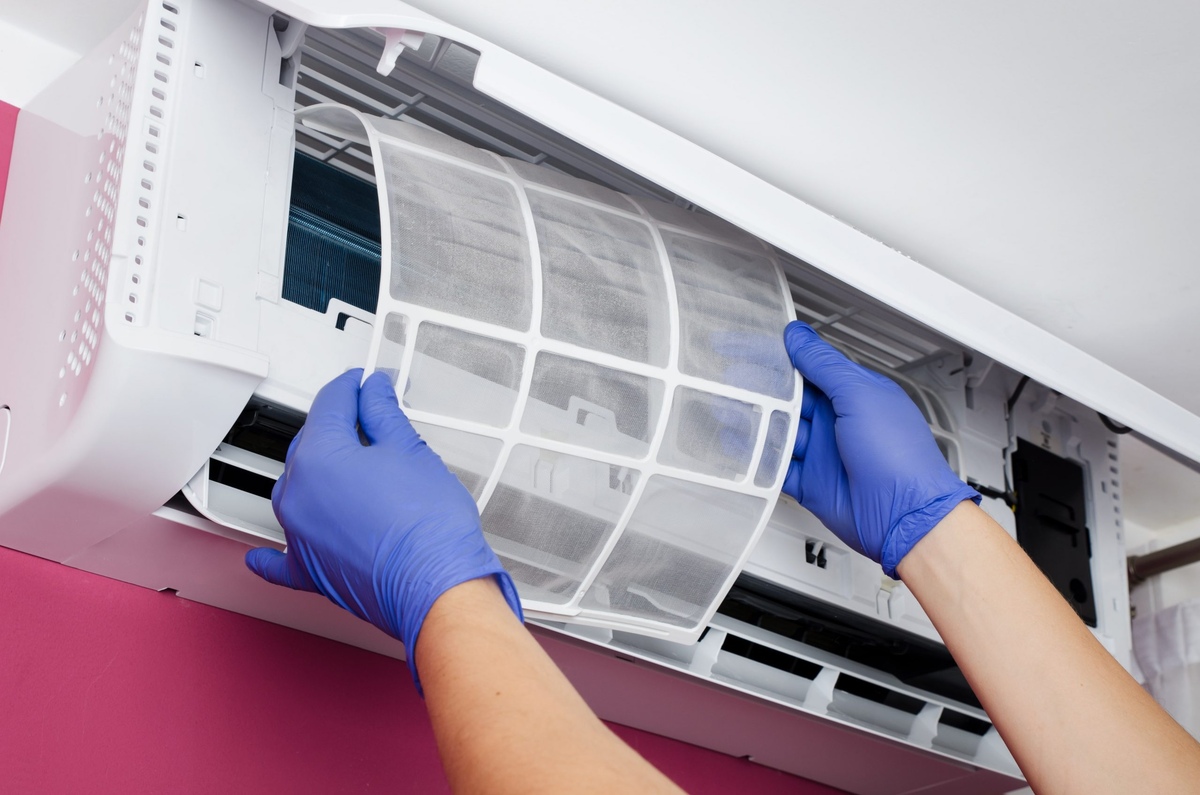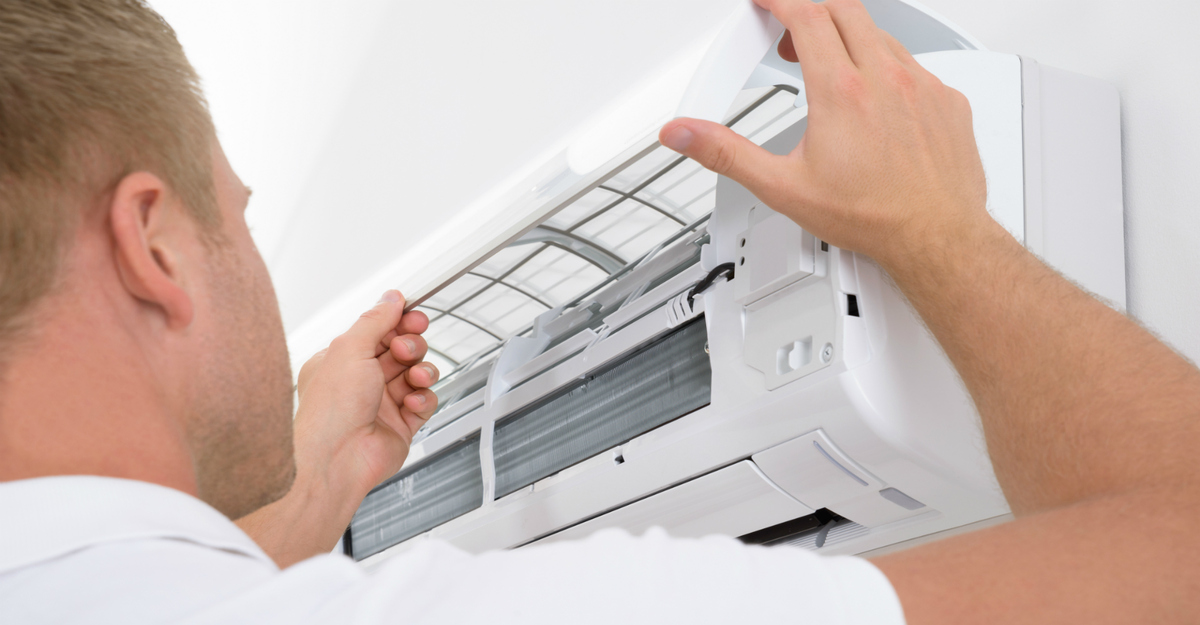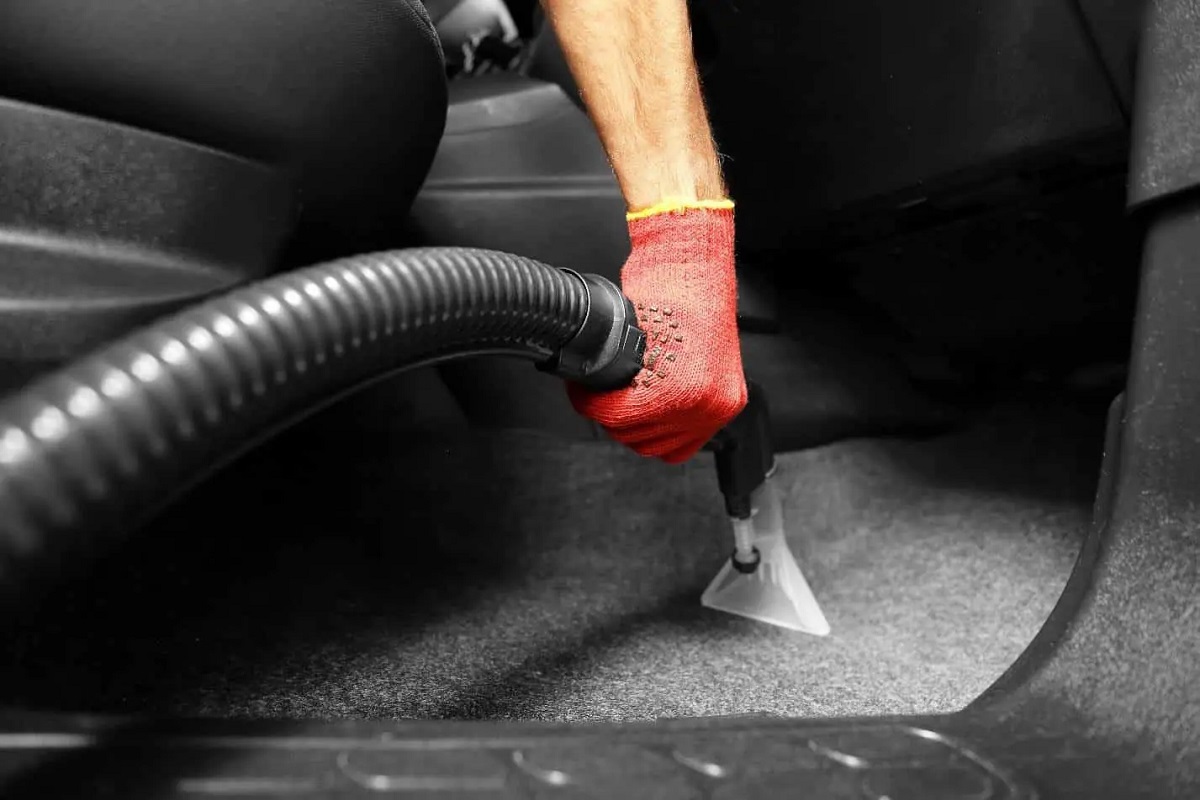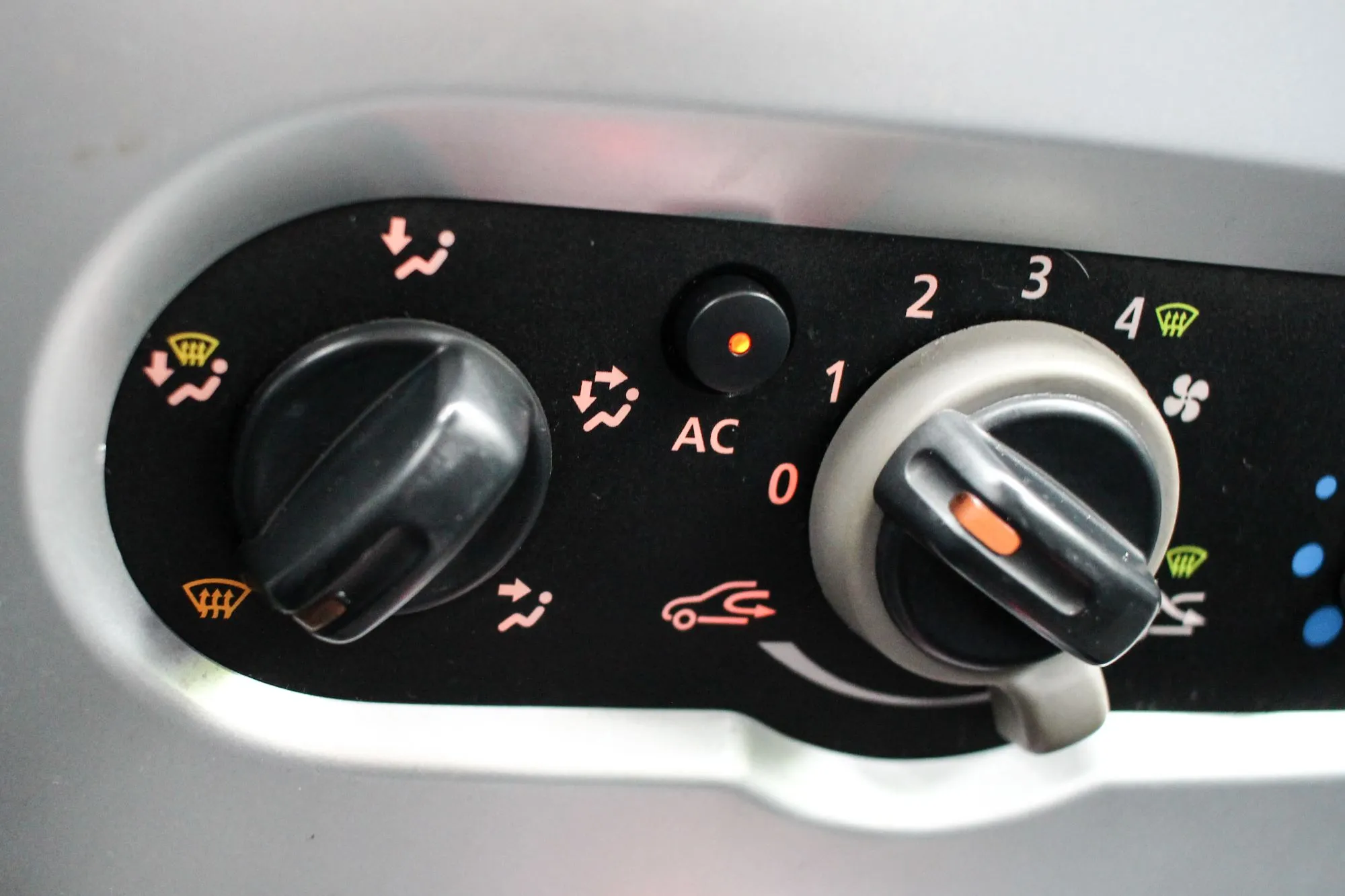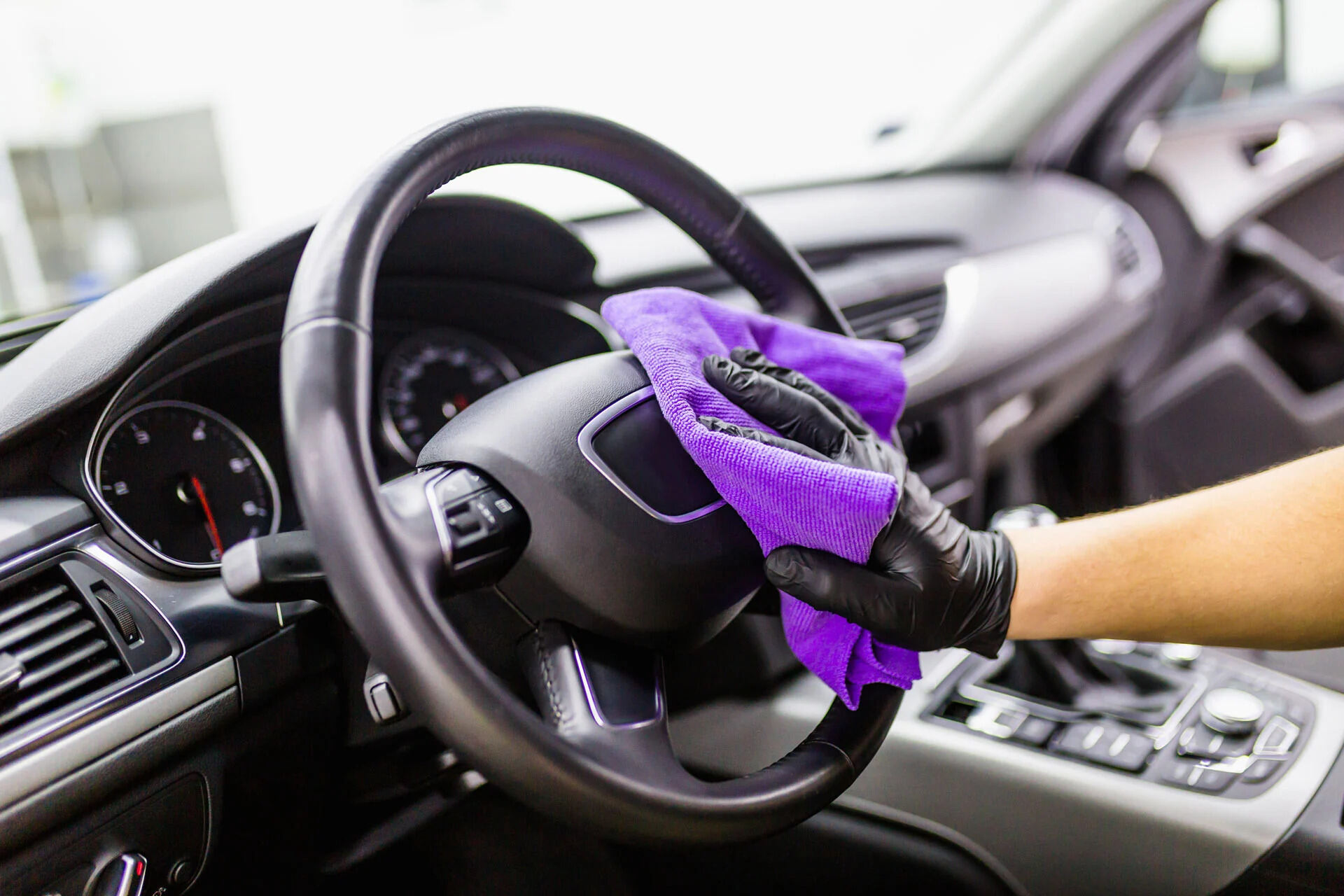Home>Home Maintenance>How To Clean My Car Air Conditioning
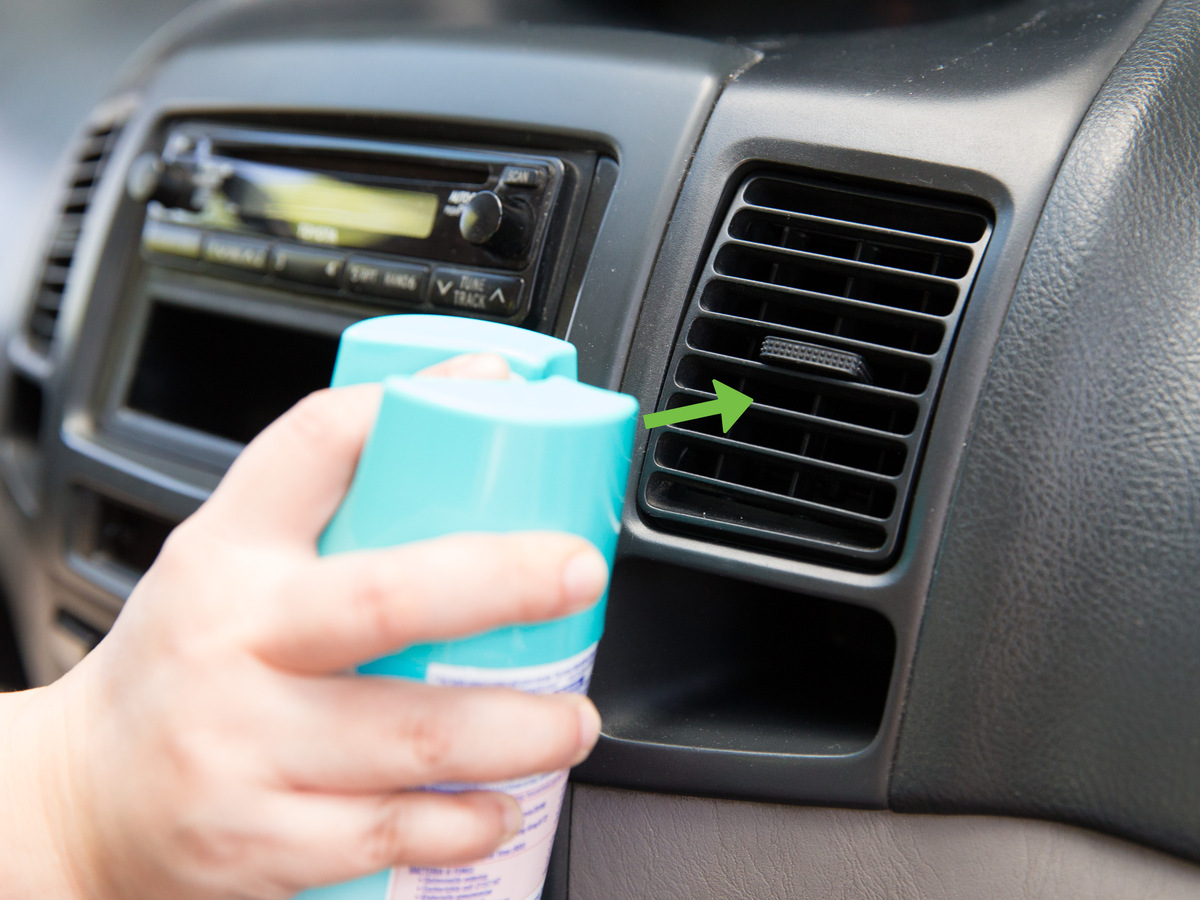

Home Maintenance
How To Clean My Car Air Conditioning
Modified: October 27, 2024
Learn how to clean your car's air conditioning system with this step-by-step guide. Keep your vehicle fresh and cool at home with easy maintenance tips.
(Many of the links in this article redirect to a specific reviewed product. Your purchase of these products through affiliate links helps to generate commission for Storables.com, at no extra cost. Learn more)
Introduction
Welcome to our comprehensive guide on how to clean your car air conditioning system! Keeping your car’s air conditioning clean is not only essential for maintaining optimal airflow and cooling, but it also contributes to your overall comfort and health. A dirty air conditioning system can harbor bacteria, mold, and unpleasant odors, which can negatively impact the quality of the air you breathe inside your vehicle.
Regularly cleaning your car’s air conditioning system helps to improve its performance, extend its lifespan, and ensure that you always enjoy clean and fresh air while driving. In this article, we will walk you through the process of effectively cleaning your car air conditioning, discussing the importance of cleanliness, signs that indicate the need for cleaning, the tools and materials you will need, and step-by-step instructions to achieve a thorough cleaning.
Before we dive into the details, it’s important to note that if you are not comfortable or confident in your ability to clean your car’s air conditioning system, it’s always best to consult a professional. They have the expertise and specialized equipment to perform a deep and thorough cleaning. However, if you’re up for the challenge, let’s get started!
Key Takeaways:
- Regularly cleaning your car’s air conditioning system is crucial for fresh, clean air, improved cooling, and preventing unpleasant odors. It also extends the system’s lifespan, saving you from costly repairs.
- Signs like weak airflow, odors, or poor cooling indicate the need for cleaning. Follow the step-by-step guide and precautions to safely clean your car’s air conditioning system for a comfortable driving experience.
Read more: How To Check My Car Air Conditioning
Why is it important to clean car air conditioning?
Keeping your car’s air conditioning system clean is vital for several reasons. Let’s explore the key reasons why regular cleaning is essential:
- Improved Air Quality: Over time, dirt, dust, pollen, and other contaminants can accumulate in your car’s air conditioning system. When you turn on the AC, these particles can be circulated into the cabin, leading to poor air quality. Regular cleaning helps to remove these allergens, pollutants, and irritants, ensuring that the air you breathe inside your vehicle is clean and fresh.
- Enhanced Cooling Performance: A dirty air conditioning system can become less efficient in cooling your vehicle. Accumulated debris can hinder the airflow, reducing the air conditioning’s ability to cool effectively. By cleaning the system, you remove any obstructions and improve the airflow, resulting in better cooling performance and faster temperature reduction.
- Prevention of Odor: The accumulation of dirt, dust, and moisture can create a breeding ground for mold and bacteria within your car’s air conditioning system. This can lead to unpleasant odors every time you turn on the AC. Regular cleaning helps eliminate these odor-causing contaminants, ensuring a fresh and pleasant-smelling interior.
- Extended Lifespan: A clean air conditioning system is less prone to breakdowns and malfunctions. Debris and dirt can cause wear and tear on vital components, leading to costly repairs or even the need for a full replacement. By regularly cleaning your car’s air conditioning system, you can prolong its lifespan and save yourself from unnecessary expenses.
In summary, cleaning your car’s air conditioning system contributes to improved air quality, enhanced cooling performance, prevention of unpleasant odors, and an extended lifespan for the AC components. It is a maintenance task that should not be overlooked to ensure your comfort, health, and the longevity of the system.
Signs that indicate the need for cleaning
Knowing when to clean your car’s air conditioning system is crucial for maintaining its performance and ensuring a comfortable driving experience. Here are some signs that indicate the need for cleaning:
- Weak Airflow: If you notice that the airflow from your AC vents has become weaker than usual, it may be a sign that your air conditioning system is dirty. Accumulated dirt and debris can clog the air filters, impeding the airflow and reducing the overall cooling efficiency.
- Unpleasant Odors: Foul or musty odors when you turn on your car’s air conditioning can indicate the presence of mold or bacteria. These microorganisms can thrive in the damp environment of a dirty AC system. Cleaning the system will help eliminate the source of the odor and ensure that you enjoy fresh-smelling air inside your vehicle.
- Poor Cooling Performance: If you find that your car’s air conditioning is not cooling as effectively as it used to or it takes longer to reach the desired temperature, it could be due to a dirty system. The accumulation of dirt and debris on the evaporator coil can hinder heat exchange, resulting in reduced cooling efficiency.
- Excessive Moisture: If you notice excessive condensation inside the cabin or on the windshield when the air conditioning is running, it could indicate a clogged or dirty system. Moisture buildup occurs when the evaporator coil is not able to efficiently remove humidity from the air.
- Unusual Noises: Unusual noises, such as rattling or hissing sounds, coming from your car’s air conditioning system can be a sign of accumulated debris. If these noises persist, it’s important to have your system inspected and cleaned to prevent further damage.
If you experience any of these signs, it’s a clear indication that your car’s air conditioning system requires cleaning. Regular inspections and maintenance will help prevent these issues and ensure that your AC operates optimally, providing you with cool, clean, and comfortable airflow while driving.
Tools and materials required
Before you begin cleaning your car’s air conditioning system, gather the following tools and materials:
- Screwdriver: You may need a screwdriver to remove any screws or fasteners securing access panels or air vents.
- Cleaning Solution: Choose a suitable cleaning solution specifically designed for cleaning car air conditioning systems. Look for products that are safe for use on evaporator coils and can effectively remove dirt, mold, and bacteria.
- Clean Cloth or Microfiber Towel: Use a clean cloth or microfiber towel to wipe down surfaces and remove any dirt or residue.
- Air Compressor or Can of Compressed Air: An air compressor or can of compressed air can be used to blow out dust and debris from hard-to-reach areas, such as the air vents and crevices.
- Brushes: Soft-bristle brushes can help in loosening and removing dirt and debris from the air vents, fans, and other components of the air conditioning system.
- Gloves and Safety Glasses: Wear gloves and safety glasses to protect your hands and eyes from any cleaning solution or debris that may be released during the cleaning process.
- Vacuum Cleaner: A vacuum cleaner with a brush attachment can be useful for removing loose debris from the air vents and surrounding areas.
Make sure you have all the necessary tools and materials ready before you begin the cleaning process. This will ensure that you have a smooth and efficient cleaning experience, leading to a thoroughly cleaned car air conditioning system.
Regularly clean or replace the cabin air filter in your car to keep the air conditioning system working efficiently and to prevent musty odors.
Step-by-step guide to cleaning car air conditioning
Now that you have gathered the necessary tools and materials, let’s dive into the step-by-step process of cleaning your car’s air conditioning system:
- Turn off the Engine: Start by turning off the car’s engine and ensuring that all the electrical components are switched off.
- Locate the Access Panel: Locate the access panel to the air conditioning system. It is usually located under the dashboard on the passenger side of the vehicle. Use a screwdriver to remove any screws or fasteners holding the access panel in place.
- Clean the Air Filters: Once the access panel is removed, locate the air filters. These filters are responsible for trapping dust and debris. Remove them and gently clean them using a vacuum cleaner or by tapping them to dislodge any loose dirt. If the filters are heavily soiled, consider replacing them with new ones.
- Clean the Air Vents: Use a soft-bristle brush to remove any dirt and debris from the air vents. Pay close attention to the vents’ edges and crevices, as these areas tend to accumulate dust. Use an air compressor or can of compressed air to blow out any remaining dirt and debris from the vents.
- Clean the Evaporator Coils: Locate the evaporator coils, which are usually found behind the dash. Spray the cleaning solution specifically designed for car air conditioning systems onto the coils, following the manufacturer’s instructions. Allow the solution to penetrate for a few minutes to loosen dirt and kill any bacteria or mold. Then, use a clean cloth to wipe away the dirt and residue. Repeat this process until the coils are clean.
- Reassemble the Air Filters and Access Panel: Once the evaporator coils are clean, reassemble the air filters and secure the access panel with the screws or fasteners.
- Run the AC: Start the car’s engine and turn on the air conditioning. Allow it to run for a few minutes to ensure that everything is functioning properly. Check for any unusual noises or signs of a leak.
- Regular Maintenance: Schedule regular cleanings for your car’s air conditioning system to maintain its performance. Aim for at least once a year or more frequently if you live in a dusty or humid environment.
By following these step-by-step instructions, you can effectively clean your car’s air conditioning system, ensuring its optimal performance and the delivery of clean and cool air while driving.
Read more: Why Is My Car Air Conditioning Not Working
Precautions to take while cleaning car air conditioning
While cleaning your car’s air conditioning system, it’s important to take certain precautions to ensure your safety and the integrity of the system. Here are some precautions to keep in mind:
- Turn off the Engine: Before starting any cleaning or maintenance tasks, always turn off the car’s engine and ensure that all electrical components are switched off. This helps prevent any accidental activation of the air conditioning system and reduces the risk of electrical shock.
- Protective Gear: Wear gloves and safety glasses to protect your hands and eyes from any cleaning solution, debris, or dust that may be released during the cleaning process.
- Work in a Well-Ventilated Area: Make sure you are working in a well-ventilated area to avoid inhaling any fumes from the cleaning solution or any potential allergens that may be present in the air conditioning system.
- Follow Manufacturer’s Instructions: Read and follow the instructions provided on the cleaning solution’s packaging. Different products may have specific application techniques and safety guidelines, so it’s important to adhere to them for effective and safe cleaning.
- Avoid Excessive Force: When removing screws or fasteners, avoid applying excessive force as it may cause damage to the access panel or other components of the air conditioning system. Use the appropriate tools and take your time to remove them carefully.
- Use Caution with Compressed Air: If you are using an air compressor or canned compressed air, follow the manufacturer’s instructions and be cautious while blowing out debris. Direct the air away from yourself and others, as well as sensitive components of the air conditioning system.
- Be Mindful of Electrical Connections: Be cautious when working near electrical connections or components of the air conditioning system. Avoid disconnecting or tampering with any electrical cables unless you are experienced and confident in doing so.
- Consult a Professional if Needed: If you are unsure about any aspect of cleaning your car’s air conditioning system or if you encounter complex issues, it’s always best to consult a professional. They have the expertise and specialized equipment to handle any challenges and ensure the job is done correctly.
By following these precautions, you can safely clean your car’s air conditioning system without risking any damage to yourself or the components of the system. Remember, if you are not comfortable or confident in your abilities, it’s best to seek professional assistance.
Additional tips for maintaining car air conditioning system
Aside from regular cleaning, there are other measures you can take to ensure the longevity and optimal performance of your car’s air conditioning system. Consider the following additional tips for maintenance:
- Run the AC Regularly: Even when you’re not using the cooling function, run the air conditioning system for a few minutes every week. This helps circulate the refrigerant and prevents the seals from drying out, which can lead to leaks.
- Keep the Cabin Clean: A clean cabin reduces the amount of dirt and debris that can enter the air conditioning system. Regularly vacuum the interior and wipe down surfaces to minimize the accumulation of dust and allergens.
- Check and Replace Filters: Inspect and replace the air filters regularly, as recommended by the manufacturer. Clean air filters ensure proper airflow and help keep the system free from dirt and debris.
- Monitor Refrigerant Levels: If your air conditioning system is not cooling as effectively as it used to, it may be due to low refrigerant levels. Consult a professional to check and refill the refrigerant if necessary.
- Avoid Extreme Temperatures: Try not to subject your vehicle to extreme temperature conditions, as this can put additional strain on the air conditioning system. Park your car in shaded areas whenever possible to reduce the workload on the AC.
- Use Recirculation Mode: When driving in heavily polluted or dusty areas, switch the AC to recirculation mode. This prevents outside air from entering the cabin and helps maintain cleaner air quality.
- Annual Inspection: Schedule an annual inspection with a qualified technician to have your car’s air conditioning system thoroughly checked. They can detect any potential issues early on and perform necessary maintenance or repairs.
- Listen for Unusual Noises: Pay attention to any unusual noises coming from the air conditioning system, such as grinding or squealing sounds. These may indicate a problem that requires professional attention.
- Keep Condenser Clean: The condenser, located at the front of the vehicle, can become clogged with debris. Regularly clean it using compressed air or a soft brush to maintain proper airflow.
Following these additional tips and incorporating them into your car maintenance routine can help ensure that your air conditioning system operates efficiently and provides you with cool and clean air for a comfortable driving experience.
Conclusion
Properly cleaning and maintaining your car’s air conditioning system is crucial for optimal performance, improved air quality, and your overall comfort and well-being while driving. By following the step-by-step guide outlined in this article and taking the necessary precautions, you can effectively clean your car air conditioning system and enjoy cool and clean air throughout your journeys.
Regular cleaning helps to remove dirt, dust, allergens, and potential sources of odors, ensuring a fresh and pleasant interior environment. Additionally, it can improve cooling performance and extend the lifespan of your air conditioning system, saving you from costly repairs or replacements.
Remember to run the AC regularly, keep the cabin clean, monitor refrigerant levels, and schedule annual inspections to maintain the system’s efficiency and identify any potential issues early on. By adhering to these maintenance tips, you can ensure that your car’s air conditioning system works effectively and provides you with a comfortable and enjoyable driving experience.
If you’re unsure about any aspect of cleaning your car’s air conditioning system or if you encounter complex issues, it’s always best to seek professional assistance. They have the expertise and knowledge to handle any challenges and ensure your system is in top-notch condition.
Take the time to care for your car’s air conditioning system, and you’ll reap the benefits of clean and refreshing air while driving. Stay cool and enjoy the journey!
Frequently Asked Questions about How To Clean My Car Air Conditioning
Was this page helpful?
At Storables.com, we guarantee accurate and reliable information. Our content, validated by Expert Board Contributors, is crafted following stringent Editorial Policies. We're committed to providing you with well-researched, expert-backed insights for all your informational needs.
